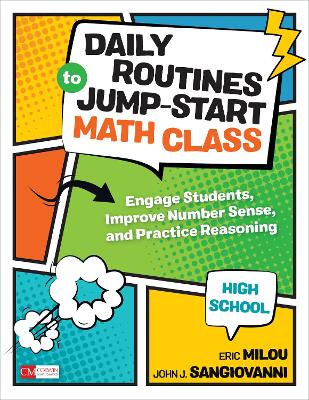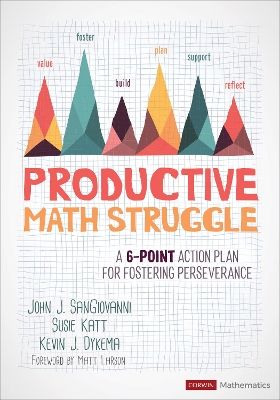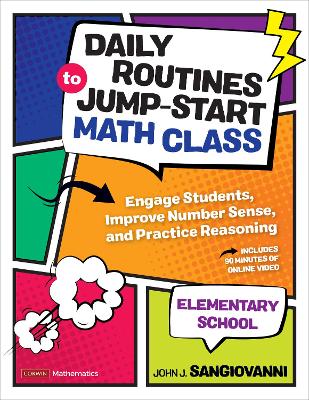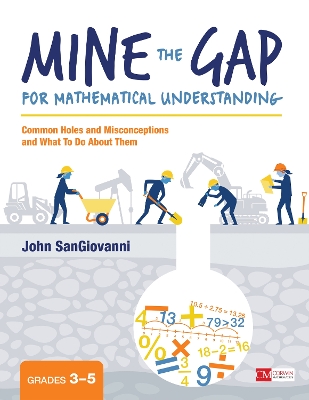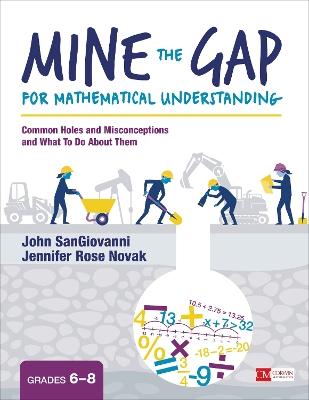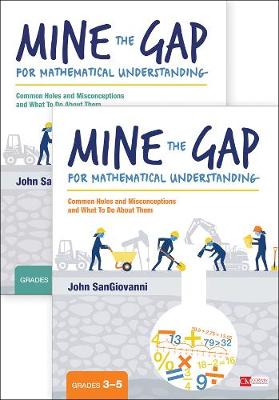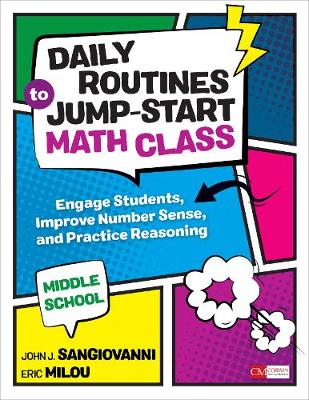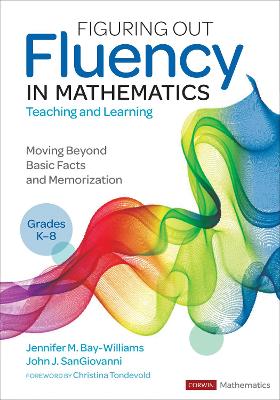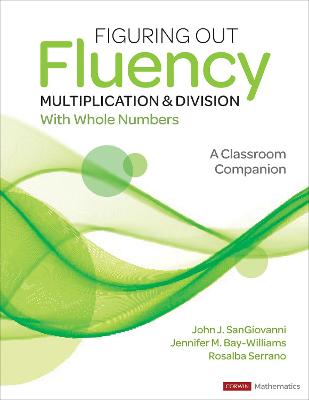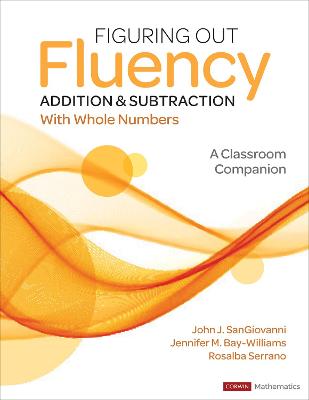Corwin Mathematics
11 total works
Daily Routines to Jump-Start Math Class, High School
by Eric Milou and John J. SanGiovanni
- Frequently revisit essential mathematical concepts
- Foster and shore up conceptual understanding
- Engage in mental mathematics, leading to efficiency and fluency
- Engage in mathematical discourse by constructing viable arguments and critiquing the reasoning of others
- Reason mathematically, and prepare for high stakes assessments
- Move learning beyond "correctness" by valuing mistakes and discourse and encouraging a growth mindset
Mine the Gap for Mathematical Understanding, Grades K-2
by John J. SanGiovanni
Productive Math Struggle
by John J. SanGiovanni, Susie Katt, and Kevin J. Dykema
Guiding teachers through six specific actions-including valuing, fostering, building, planning, supporting, and reflecting on struggle-this book provides an essential plan for embracing productive perseverance in mathematics.
Daily Routines to Jump-Start Math Class, Elementary School
by John J. SanGiovanni
Mine the Gap for Mathematical Understanding, Grades 3-5
by John J. SanGiovanni
Mine the Gap for Mathematical Understanding, Grades 6-8
by John J. SanGiovanni and Jennifer R. Novak
Being an effective math educator is one part based on the quality of the tasks we give, one part how we diagnose what we see, and one part what we do with what we find. Yet with so many students and big concepts to cover, it can be hard to slow down enough to look for those moments when students' responses tell us what we need to know about next best steps. In this remarkable book, John SanGiovanni helps us value our students' misconceptions and incomplete understandings as much as their correct ones-because it's the gap in their understanding today that holds the secrets to planning tomorrow's best teaching.
Bundle: Sangiovanni: Mine the Gap (3-5) + Sangiovanni: Mine the Gap (K-2)
by John J. SanGiovanni
Daily Routines to Jump-Start Math Class, Middle School
by John J. SanGiovanni and Eric Milou
- Frequently revisit essential mathematical concepts
- Foster and shore up conceptual understanding
- Engage in mental mathematics, leading to efficiency and fluency
- Engage in mathematical discourse by constructing viable arguments and critiquing the reasoning of others
- Reason mathematically, which can improve performance on high-stakes assessments
- Move learning beyond "correctness" by valuing mistakes and discourse to encourage a growth mindset
Figuring Out Fluency in Mathematics Teaching and Learning, Grades K-8
by Jennifer M Bay-Williams and John J. SanGiovanni
Teach your students to become decision makers who rely on their own mathematical thinking.
Fluency in mathematics is more than adeptly using basic facts or implementing algorithms. Real fluency involves reasoning and creativity, and it varies by the situation at hand.
Figuring Out Fluency in Mathematics Teaching and Learning offers educators the inspiration to develop a deeper understanding of procedural fluency, along with a plethora of pragmatic tools for shifting classrooms toward a fluency approach. In a friendly and accessible style, this hands-on guide empowers educators to support students in acquiring the repertoire of reasoning strategies necessary to becoming versatile and nimble mathematical thinkers. It includes:
- "Seven Significant Strategies" to teach to students as they work toward procedural fluency.
- Activities, fluency routines, and games that encourage learning the efficiency, flexibility, and accuracy essential to real fluency.
- Reflection questions, connections to mathematical standards, and techniques for assessing all components of fluency.
- Suggestions for engaging families in understanding and supporting fluency.
Fluency is more than a toolbox of strategies to choose from; it's also a matter of equity and access for all learners. Give your students the knowledge and power to become confident mathematical thinkers.
Figuring Out Fluency - Multiplication and Division With Whole Numbers
by John J. SanGiovanni, Jennifer M Bay-Williams, and Rosalba Serrano
Give each and every student the knowledge and power to become skilled and confident mathematical thinkers and doers.
Figuring Out Fluency - Addition and Subtraction With Whole Numbers
by John J. SanGiovanni, Jennifer M Bay-Williams, and Rosalba Serrano
Give each and every student the knowledge and power to become skilled and confident mathematical thinkers and doers.
